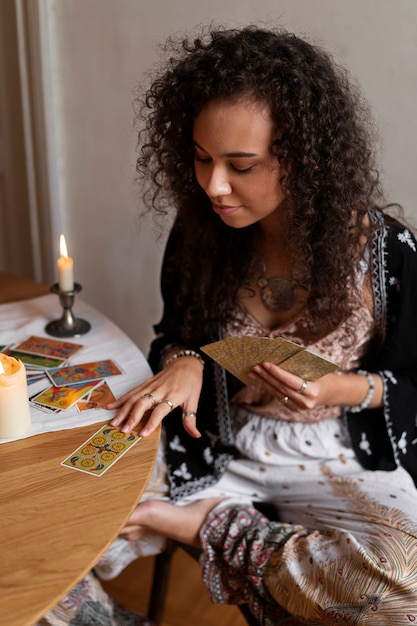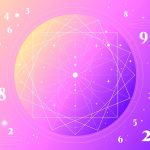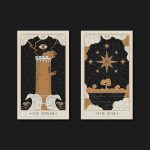
Welcome to the all-inclusive guide to tarot reading. Whether you’re a beginner or a seasoned expert, this guide will help you navigate the intricate world of tarot. It covers everything from the history and different types of tarot decks to selecting the right spreads, preparing your cards, and interpreting them for yourself and others.
Tarot cards first appeared in Europe in the early 14th century as an Italian four-suited card game. The “Visconti-Sforza” deck from the mid-1440s was linked to Italian royalty, and other notable decks like the “Mantegna” and the 15th-century Marseille deck gained popularity. In the 16th century, tarot became associated with mysticism. British astronomer John Dee reportedly used tarot cards for angelic communication, associating it with the Mediaeval Memory system that relied on symbolic imagery.
By the 18th century, French occultist Antoine Court de Gébelin proposed that the 22 Major Arcana cards represented ancient Egyptian wisdom. In the 19th century, researchers like Eliphas Levi connected tarot to the Hebrew Enochian alphabet. By the late 19th century, tarot evolved from a fortune-telling tool to one that provided insight and spiritual discovery.
A standard Tarot deck has 78 cards: the Major Arcana and the Minor Arcana. The Major Arcana consists of 22 cards portraying universal themes and major life experiences. The Minor Arcana, with its 56 cards, is divided into four suits—Wands, Cups, Swords, and Pentacles—each symbolizing different aspects of life and natural elements.
Each tarot card can have different meanings depending on whether it appears upright or reversed in a reading. Reversed cards can offer more detailed insights but are only sometimes used by all readers. It depends on your preferences and the depth of the reading you seek.
Some key cards and their meanings include:
– **The Fool**: Embodies youthful enthusiasm and suggests embracing new beginnings with an open mind.
– **The Magician**: Highlights your talents and encourages using them to achieve your goals.
– **The High Priestess**: Represents intuition and advises following your inner voice.
– **The Emperor**: Symbolizes authority and stability, often indicating career success.
– **The Lovers**: Focuses on relationships and making crucial decisions.
– **The Chariot**: Reflects determination and the potential for victory.
– **Strength**: Represents inner strength and resilience.
– **The Hermit**: Suggests solitude for self-reflection.
– **Wheel of Fortune**: Indicates life’s constant changes and cycles.
– **Justice**: Emphasizes fairness and the consequences of actions.
– **The Hanged Man**: Advises making sacrifices for positive outcomes.
– **Death**: Signifies transformation and change.
– **Temperance**: Advocates patience and balance.
– **The Devil**: Symbolizes constraints and urges overcoming self-imposed limitations.
– **The Tower**: Represents upheaval and rebuilding.
– **The Star**: Signifies hope and healing.
– **The Moon**: Reflects hidden emotions and uncertainties.
– **The Sun**: Symbolizes joy and positivity.
– **Judgement**: Encourages self-reflection and making future-oriented decisions.
– **The World**: Represents completion and fulfillment.
Knowing how to interpret each card and its position in a spread is crucial. Major Arcana cards address significant life events, while Minor Arcana cards focus on day-to-day challenges.
Different tarot decks, such as the Rider-Waite, Thoth Tarot, Wild Unknown Tarot, Shadowscapes Tarot, Gendron Tarot, and others, each offer unique interpretations and artistic styles.
When preparing for a tarot reading, it’s important to establish a peaceful and intentional space. Select a deck that resonates with you, define your reading goal, and choose the appropriate spread. Common spreads include:
– **One-Card Reading**: Provides focused guidance on a single issue.
– **Three-Card Spread**: Explores past, present, and future or other thematic combinations.
– **Celtic Cross Spread**: Offers detailed insights into complex scenarios.
– **Pentagram Spread**: Balances aspects of life through its symbolic arrangement.
– **Horseshoe Spread**: Reveals various facets of a predicament.
– **Decision Spread**: Helps compare options and make informed decisions.
Tarot readings can provide clarity on personal growth, relationships, and decision-making. As you read, balance traditional card meanings with your intuition for deeper insights. Whether you’re a beginner starting with simple techniques or an experienced reader exploring advanced spreads, trust your intuitive impressions during readings.
Cleansing your deck can enhance its effectiveness. Methods include using crystals, sorting the cards, or meditating to release stored energy. Customizing your deck with personal symbols can also create a stronger connection.
To improve your tarot reading skills, continuously explore the cards’ meanings and symbolism. Trusted Psychics offers a reliable and user-friendly platform to access professional tarot readers for insightful guidance. Whether you prefer readings on love, relationships, or future events, Trusted Psychics connects you with expert readers from the comfort of your home.
Finally, if you’re interested in expanding your divination practices, exploring oracle cards and understanding angel numbers can offer additional spiritual insights. With the right deck and reading approach, tarot can be a powerful tool for personal introspection and guidance.


